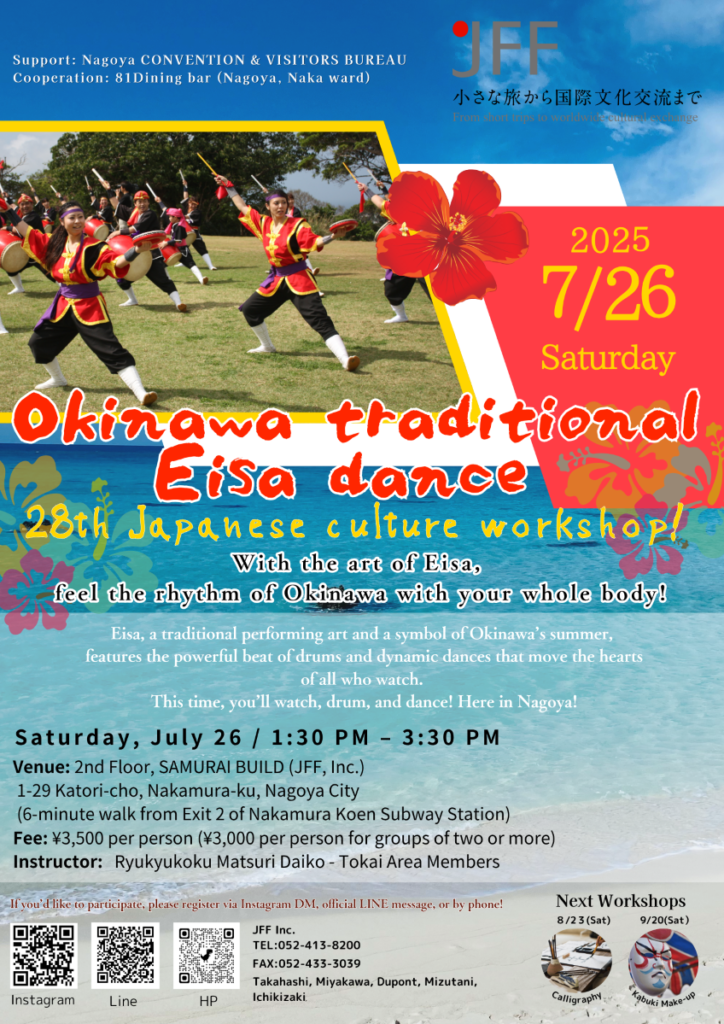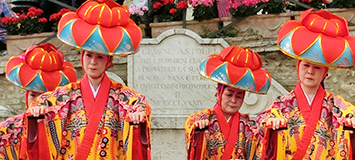SAMURAI BUILD 2F,
1-29 Katori-cho, Nakamura-ku,
Nagoya, Aichi Prefecture, Japan
Japanese pinching craft【Tsumami-Zaiku】experience🪢✂️
Japanese pinching craft【Tsumami-Zaiku】experience🪢✂️
Hi everyone 👋😀
My name is Ylenia and today I am going to introduce you our seventh “Experience Japan Culture Firsthand” entitled “Japanese pinching craft【Tsumami-Zaiku】Experience”‼️
We had the honour of having Ms. Aya Takeuchi as our instructor. She lives in Toyota City (Aichi Prefecture) and started Tsumami-Zaiku as a self-taught artist 9 years ago.
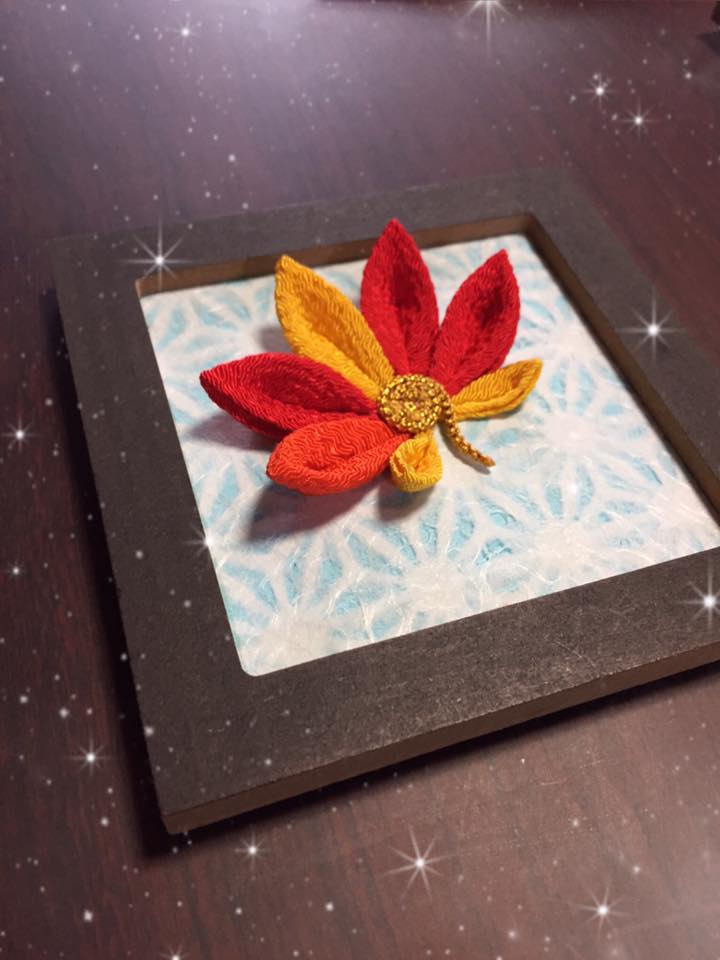
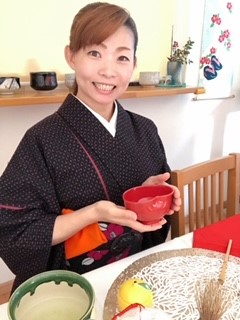
About【Tsumami-Zaiku】
“Tsumamu” ➡️ “to pinch”
“Zaiku” ➡️ “small work”
【Tsumami-zaiku】, also known as -The Art of the Pinch-, dates back to the Edo Period (1603-1867) in Kyoto.
This is a traditional Japanese craft made from small and colorful pieces of old cloth such as Kimono 👘 (the fabric is usually silk crepe), they are pinched and folded with tweezers. During the Edo Period, Tsumami-Zaiku were not accessories but original creations to put inside paulownia wood boxes. Nowadays Tsumami-zaiku is getting more and more popular.
You can create daily charming objects such as earrings, combs, kanzashi (ornamental hairpins), headbands, scarf pins and so on, or elegant ornaments for your home. The designs are various, you are spoilt of choices! Remember that “nature” and “animals” are the keywords 👌
。。。
You know, when I am in Japan, I love the feeling of the passing of the four seasons. Currently, although it is late August, in Japan Autumn is already in the air 😯 Last week I was so surprised to see all those warm-colored fall decorations as well as Halloween goods in the shops 🍂🧡🎃
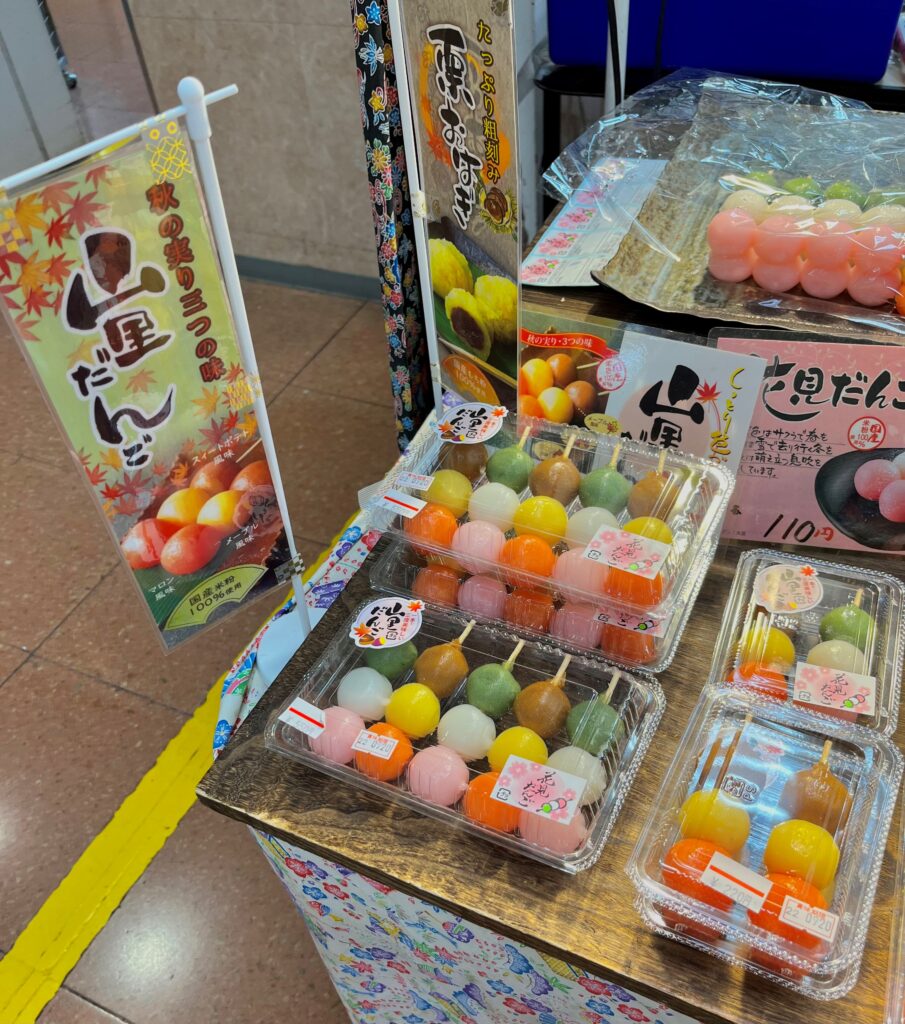
Bringing with us this「special season transition feeling」, let‘s dive into today’s【Tsumami-zaiku】theme 😊👇
Autumn Moon Viewing《Tsukimi》frame decoration 🎑
Today we are creating this delightful frame decoration 😍
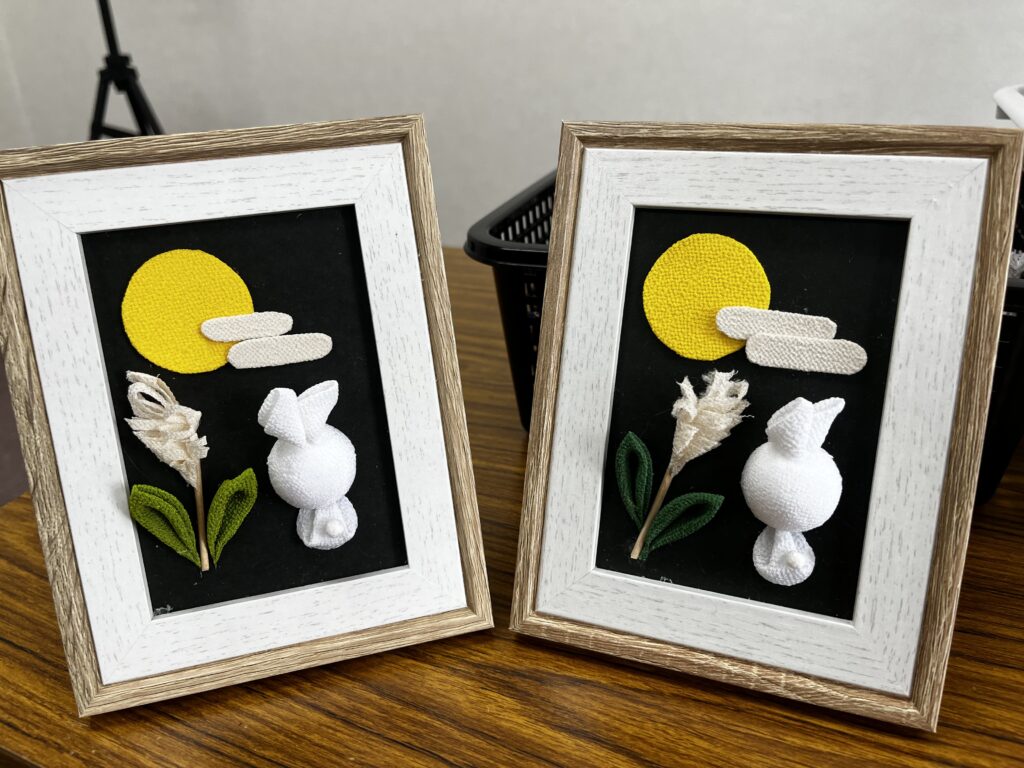
“Tsukimi” (or Otsukimi) it literally means “looking at the Moon” but it refers to the Japan’s harvest Moon Festival and it is always held in the Country in Autumn.
“Tsukimi” symbols are: tsukimi-udon (the egg yolk resembling the full moon), tsukimi-dango, the Japanese pampas grass, taro and autumnal products such as sweet potatoes, pumpkin, chestnuts and so on.
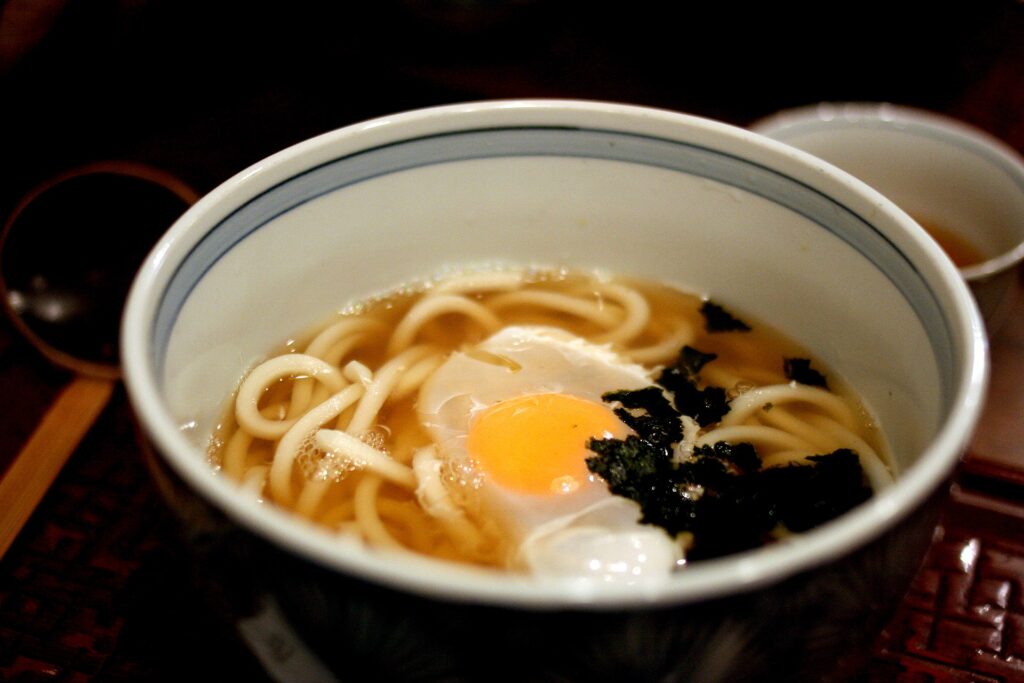
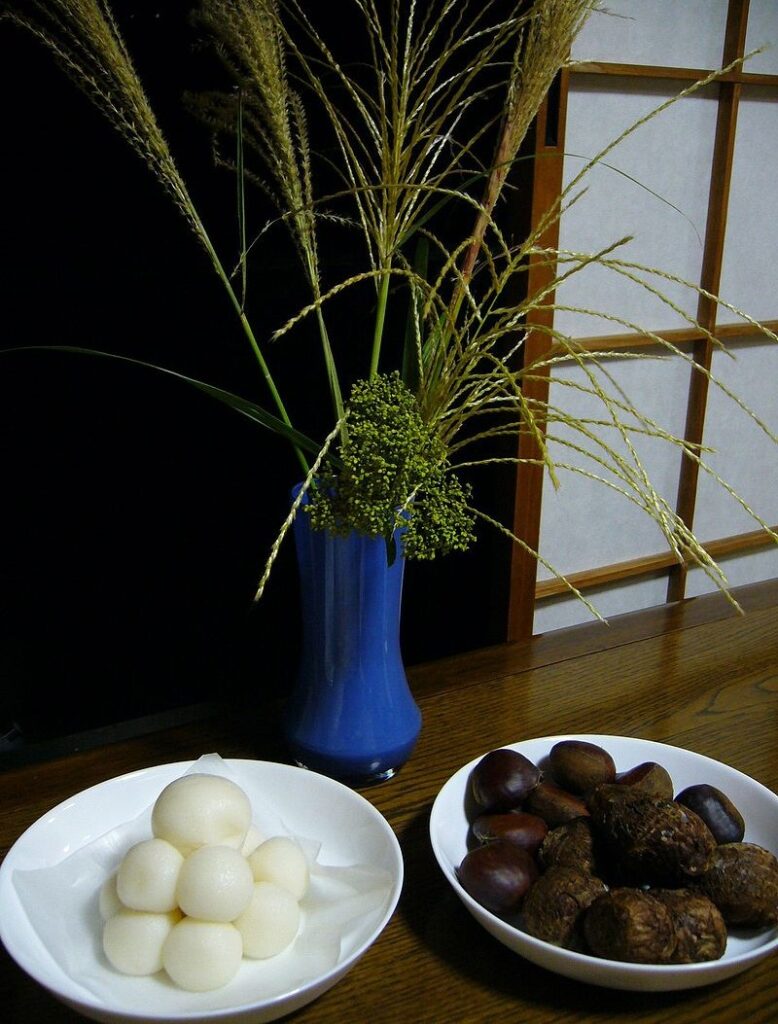
The “Moon-viewing” tradition became popular during the Heian Period (794-1185), after the influence of Buddhism coming from China and successively coexisting with the native Japanese Shintō religion. For this reason, according to a Buddhist Tale, in Japan the Moon is also said to present the image of a rabbit pounding ingredients for mochi with a mallet.
In this frame we have: a cute white rabbit 🐇, pampas grass 🌾, a full Moon 🌕 and two clouds ☁️.
Material
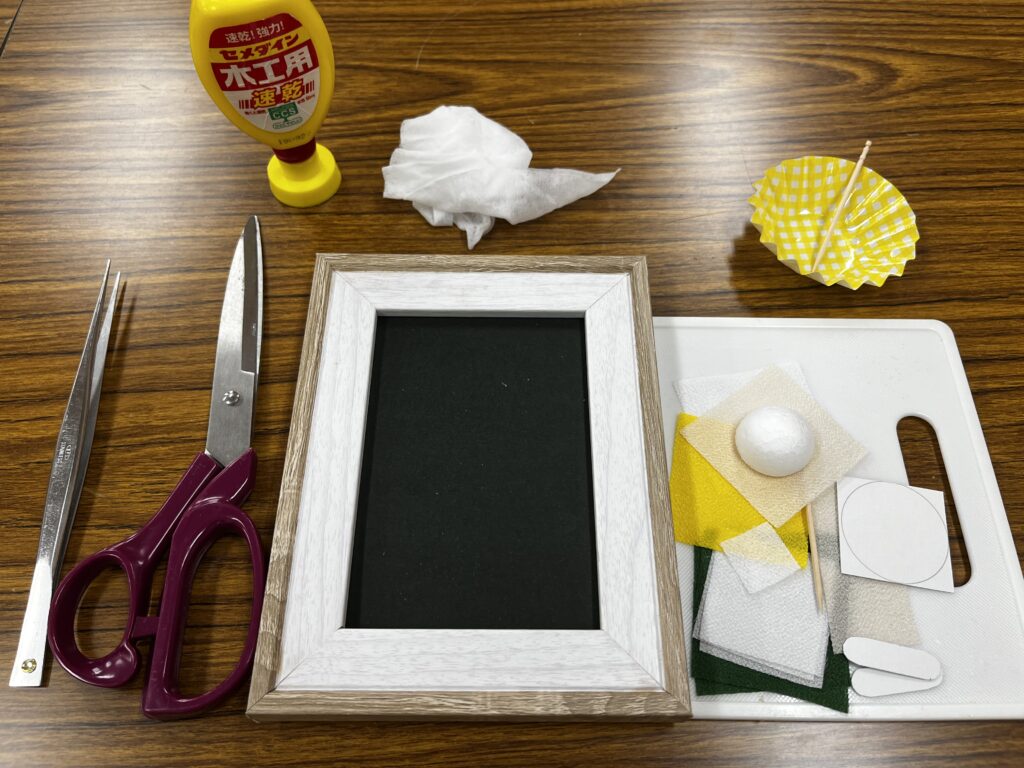
- Frame
- Wet wipes
- Starch glue
- Toothpick
- Paper cup
- Tweezers
- Small styrofoam half-ball (2 cm)
- Small pieces of cloth cut into a square/rectangular shape with different sizes: green (2), yellow (1), white (5), cream color (2),
- 1 squared cardboard with a circle drawn inside and two oval long-shaped cardboards
NO needle or thread are needed 😁
Procedures
- Starch glue in the cup
- The Moon: cut the white squared cardboard into a round shape following the drawn line inside it. Choose a side and attach the glue on the surface with a toothpick. Put the yellow cloth on it and cut it into a round shape but sure to leave 3mm on the edges. Fold
- The clouds: Put the two oval long-shaped cardboards evenly distanced on the cream-colored rectangular cloth being aware of leaving 3 mm from the edge. Cut the centre of the cloth so you have two clouds from their own cloth with 3 mm left on the edges. Successively, use the same procedure as the Moon.
- Rabbit’s head: put some glue with the toothpick only on the roundish small styrofoam half-ball and then wrap it with the white-squared cloth. Cut the fabric in excess in each corner and be sure to leave 3 mm from the edges.
- Pampas grass stem: cut the lower part of the toothpick according to the lenght you wish.
- Wheat spike green and yellowish leaves, rabbit’s ears: all created by using the “Ken (Sword)-Tsumami” technique (check the following video😁). For the green leaves, pick up the square-cut piece of cloth and put some glue on one corner, then attach the opposite side on it. You will get triangle-shaped pieces of fabric as in the image below. Fold it and make smaller triangle, be sure to match the corners of the cloth. Put some glue on the corners and pinch them so they adhere to each other.
- Rabbit’s tail: pick up the smallest squared-shaped white cloth and then put some glue on it with a toothpick. Roll it up in your hands until you have a little uniform mini-ball.
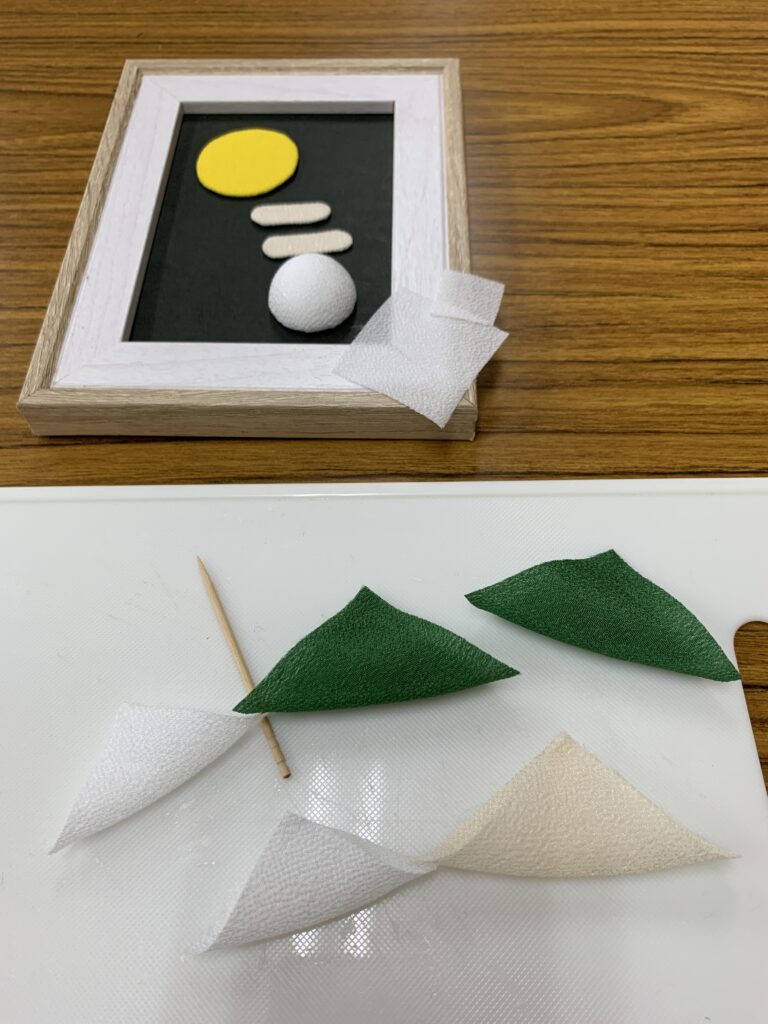
- Choose your favorite layout for the Moon, the clouds, the rabbit, the Japanese pampas grass and then paste it in the black paperboard inside the frame.
⬇️
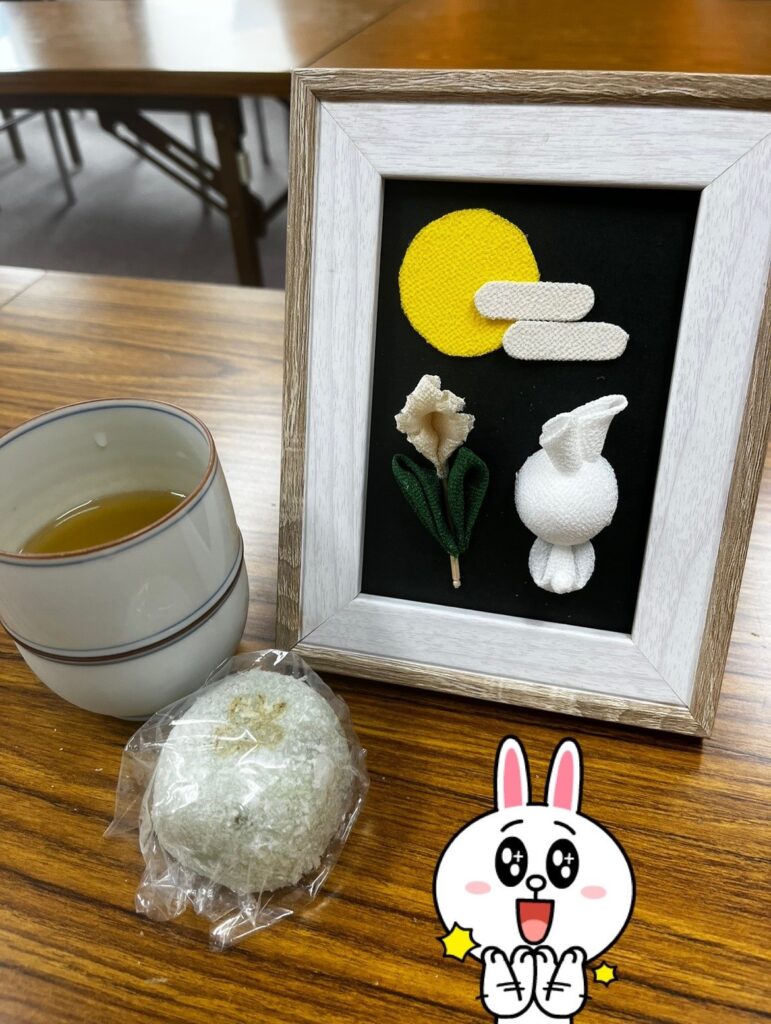
In my opinion, the most challenging parts were rabbit’s body, ears, and wheat spike leaves but the procedures overall were not difficult. I was very satisfied about the final result😍
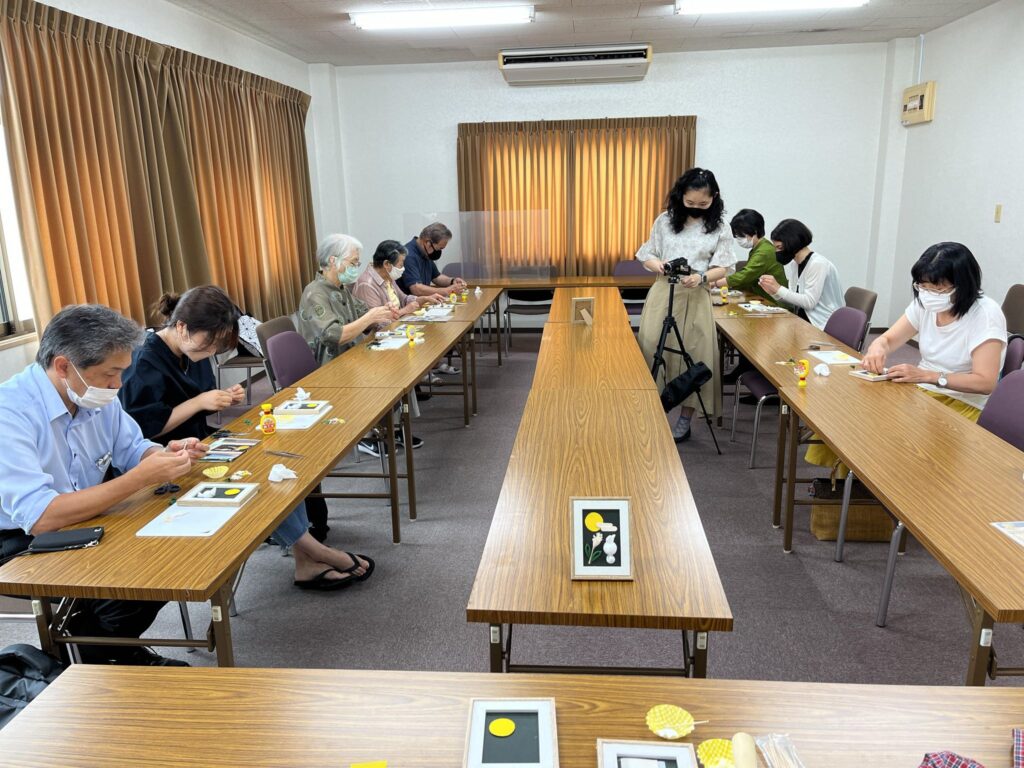

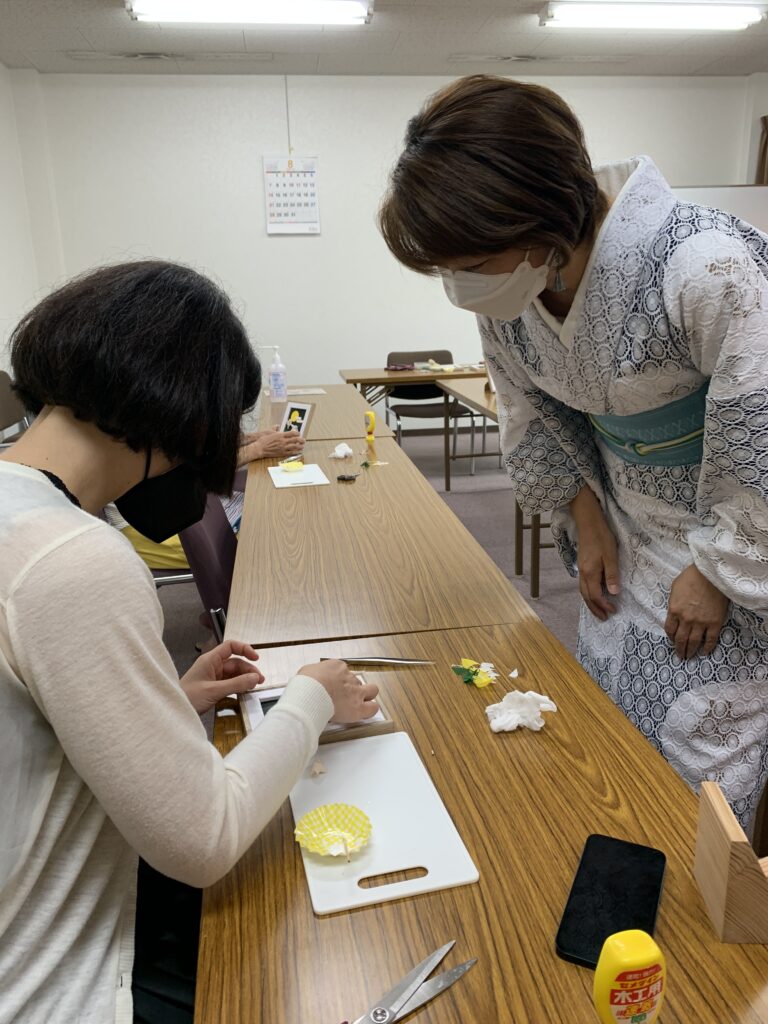
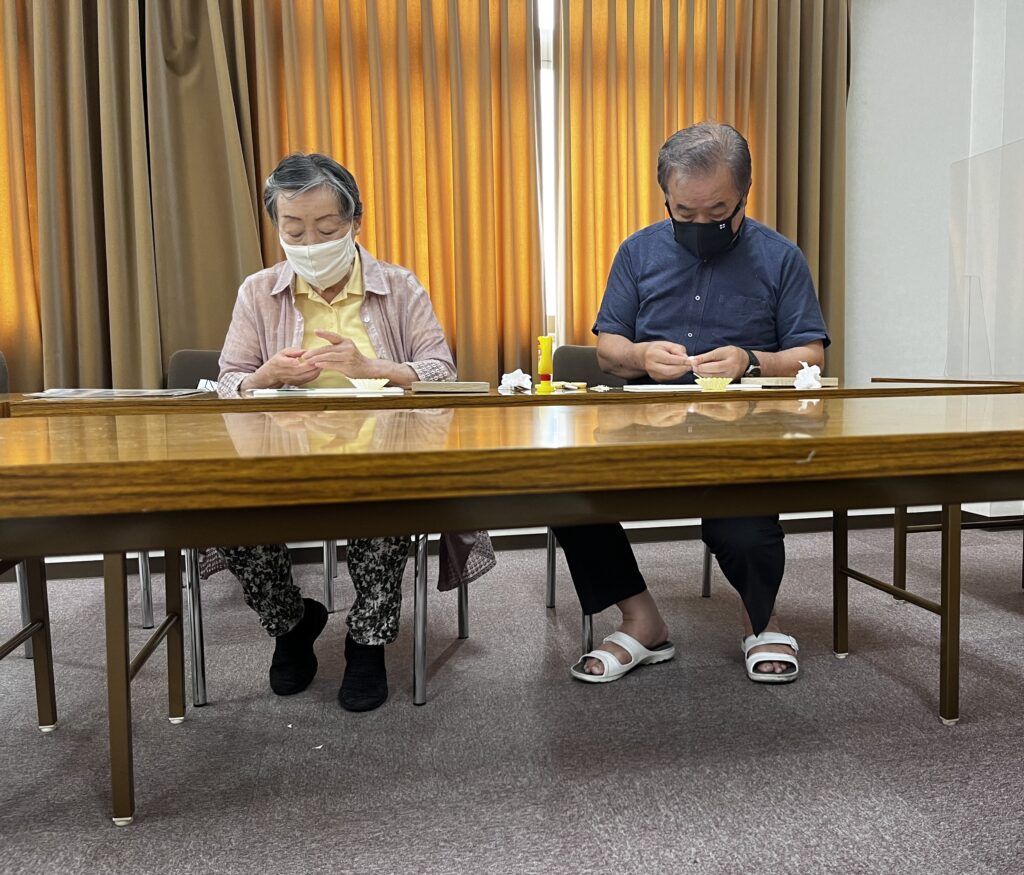
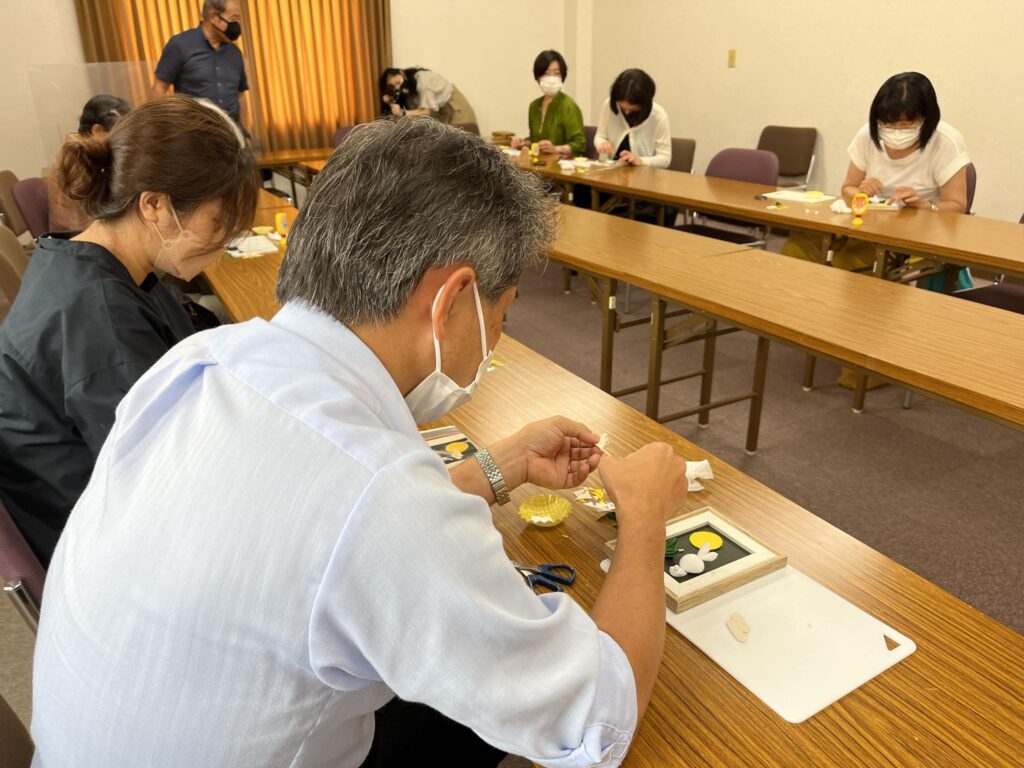
WELL DONE EVERYONE ! 🥳💯
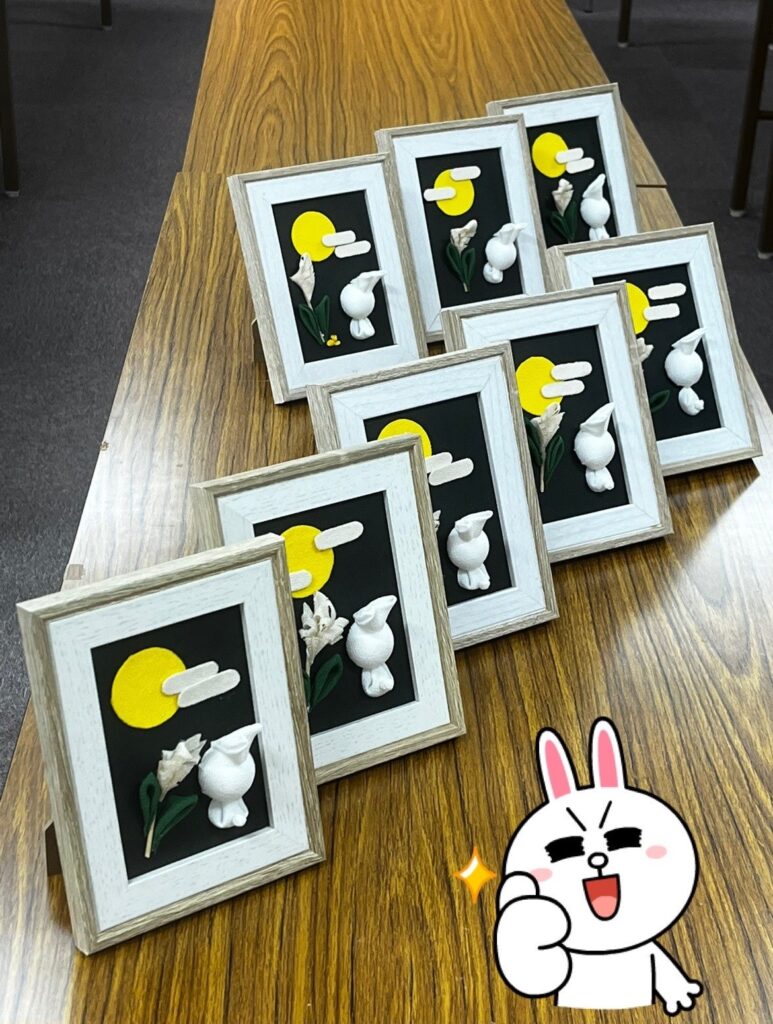
“Anyone is capable of doing Tsumami-Zaiku. It is important to practice at your own pace without looking at the people around you, there is no need to rush. I like making Tsumami-Zaiku creations according to the seasons: the traditional Japanese calendar marks the passing of the seasons, the seasonal transition can be felt everywhere, even in our home but perhaps most of us do not realize it. This is why we have to treasure Japanese culture. Once we go home, let’s decorate our room with this fresh autumn-themed Tsumami-Zaiku. We will surely feel cheered up.”(cit. by Ms. Aya Takeuchi)
Would you like to start【Tsumami-Zaiku】as a hobby❓😃
… Some Japanese useful words
つまみ細工(つまみざいく)Pron. “Tsumami-Zaiku”
月見 (つきみ)Pron. “Tsukimi” : Moon-viewing
満月 (まんげつ)Pron. “Mangetsu : Full Moon”
秋 (あき)Pron. “Aki” : Autumn
簪 (かんざし)Pron. “Kanzashi” : Ornamental hairpins
兎 (うさぎ)Pron. “Usagi” : Rabbit(s)
雲 (くも)Pron. “Kumo” : Cloud(s)
芒 (すすき)Pron. “Susuki” : Pampas grass

